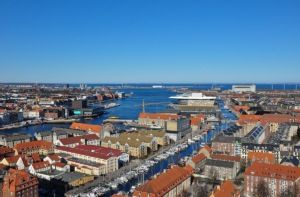News
Rising sea levels threaten Copenhagen in not-too-distant future
This article is more than 2 years old.
As water levels continue to rise globally, the Danish capital could look to Venice for inspiration in effort to keep water masses at bay

Denmark could find itself submerged if nothing is done (photo: NH Fischer)
As things stand right now, the global sea level will rise by one metre by the end of the century, according to the UN.
And with its low-laying flat landscape and numerous coastlines, Denmark is among the countries that could be severely impacted by such an occurance … including its capital, Copenhagen.
“Mega-cities on every continent will face serious impacts including Lagos, Maputo, Bangkok, Dhaka, Jakarta, Mumbai, Shanghai, Copenhagen, London, Los Angeles, New York, Buenos Aires and Santiago,” UN Secretary-General António Guterres said during a recent UN Security Council meeting.
900 million people in danger
If the UN numbers are right, a bit less than a billion people will be in trouble in front of rising sea levels. And some mega-cities from every continent will face serious impacts.
Multiple scientists are warning about the danger that is about to be represented. If the scenario continues, Copenhagen will be hit by storms and the water level will rise in the streets and then in basements.
“Of course, this applies to the whole country. Denmark is relatively flat, so even a few changes in sea level will have consequences for us,” Sebastian Mernild, professor of climate change at the University of Southern Denmark, told TV2.
READ ALSO: Powerful storm bearing down on Denmark
A few solutions to counter the problem
As the water level rises by an average of 3.5mm worldwide every year, scientists and politicians are scrambling to mitigate climate-related flooding.
As London, Rotterdam and Venice have discovered, a few solutions exist.
In Venice, work is being done to secure a distance of more than a kilometre with a so-called MOSE barrier system. When the system is activated, air is blown into some ports, which then rise above the water.
In Denmark, there are talks of following down a similar path.
Rambøll is working on a model that shoots bulkheads in from the side to close both the southern and northern parts of Copenhagen’s port.
It won’t be cheap though. The solution is estimated to cost between two and three billion kroner.
Meanwhile, other scientists are calling for a national plan to protect 1,100 kilometres of dikes along the Danish coasts.










































